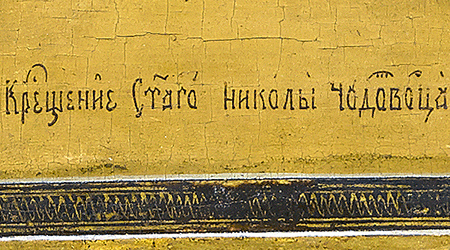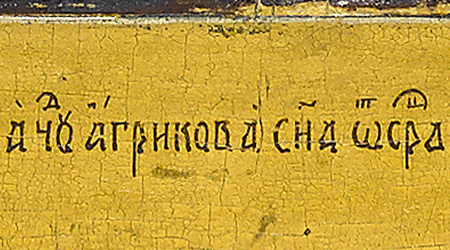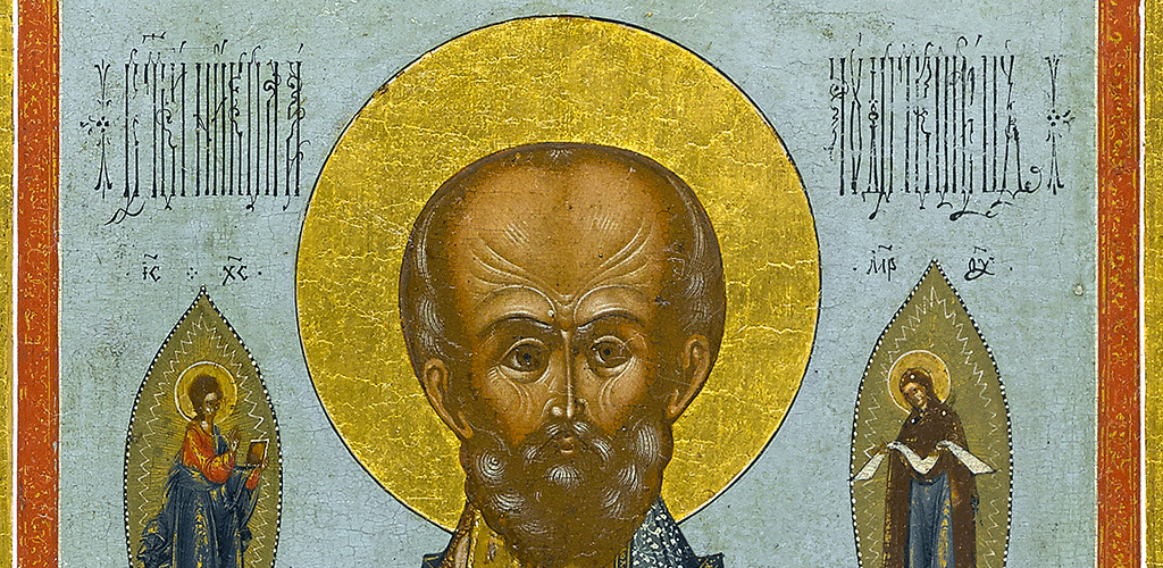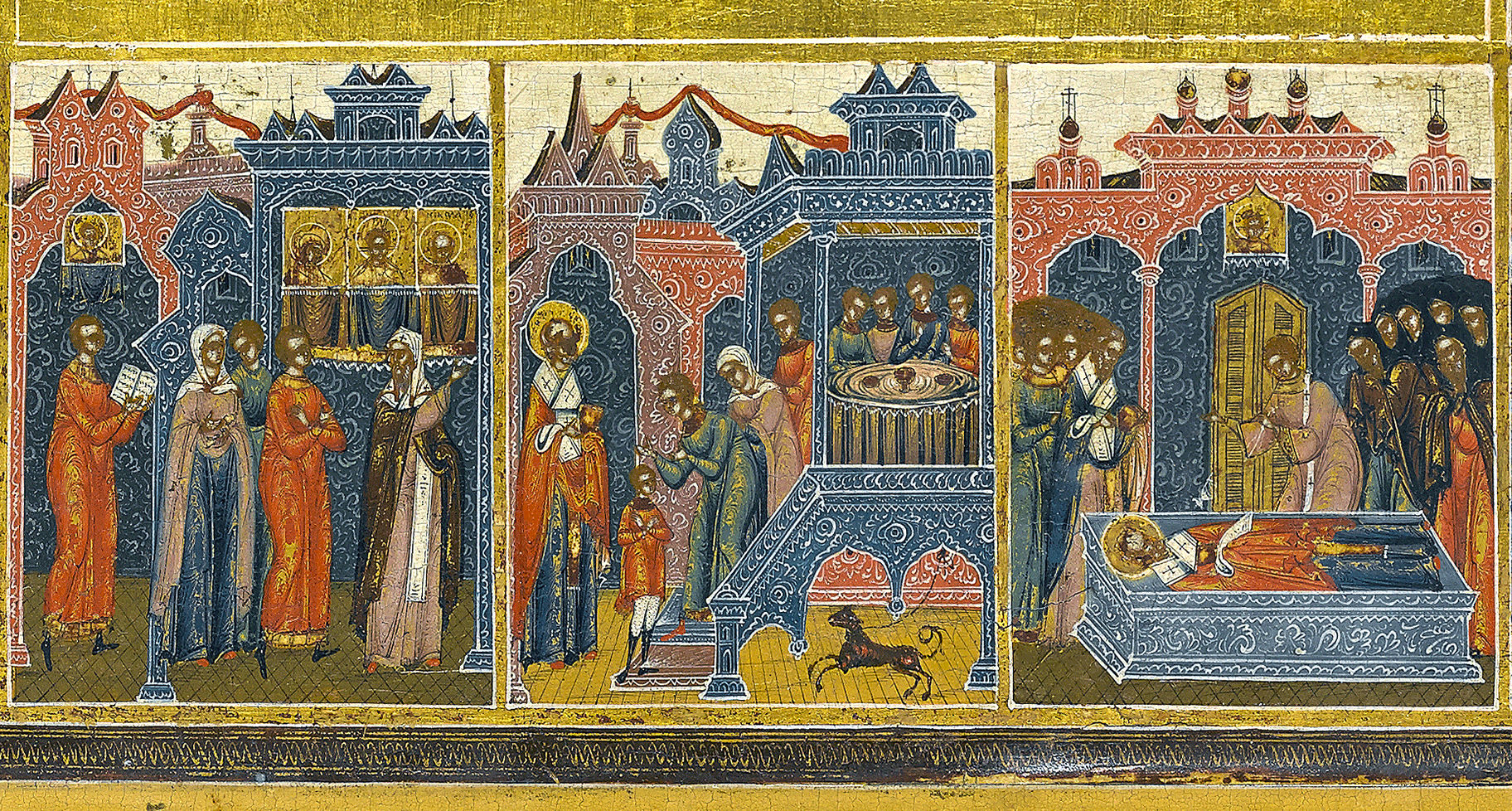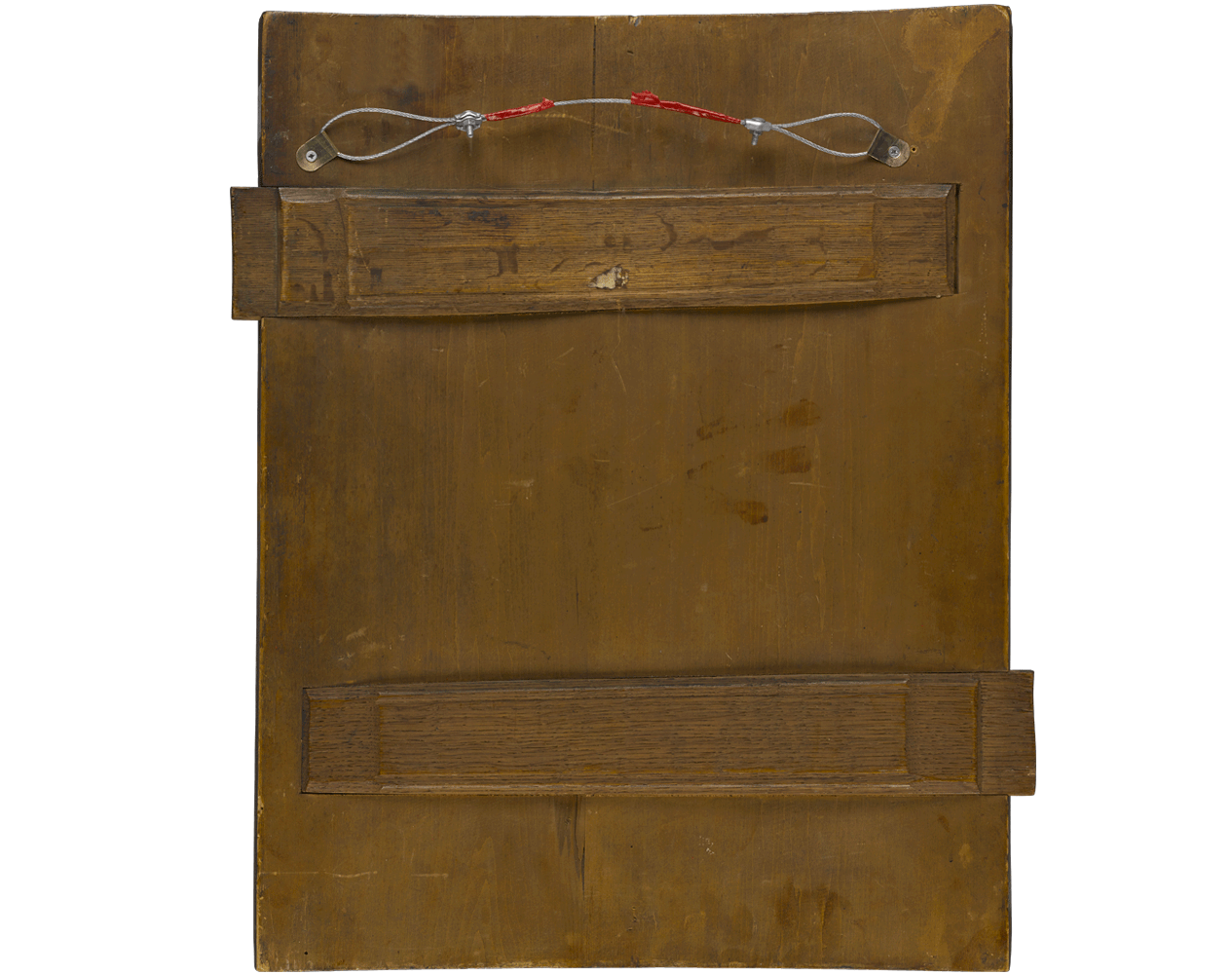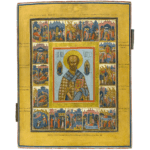- The Nativity of St. Nicholas;
- The Baptism of St. Nicholas; the miracle of St. Nicholas standing in a baptismal font;

- The Miracle of St. Nicholas healing woman with a withered arm;
- St. Nicholas in the monastic school;
- St. Nicholas consecrated as a deacon;
- St. Nicholas consecrated as a bishop;
- St. Nicholas condemns the heresy of Arius at the First Council of Nicaea;
- St. Nicholas appears to the Emperor Constantine in a dream;
- St. Nicholas rescues three men sentenced to death;
- The Miracle of St. Nicholas rescuing three maidens;
- The Miracle of St. Nicholas with a carpet;
- The Miracle of St. Nicholas saving Patriarch Athanasios from drowning;
- The Miracle of St. Nicholas with three icons;
- St. Nicholas saves Basil, son of Agricos, from Saracen captivity;
- The Entombment of St. Nicholas;
- The relics of St. Nicholas translated to Bari.
The icon is painted in the traditional style characteristic for Old Believers’ workshops. The bright, harmonious palette together with the exquisite detailing allow attributing its origin to Palekh.
The centrepiece of the icon contains a waist-length depiction of St. Nicholas the Miracle Worker wearing a bishop’s omophorion, holding a closed book of gospels in his left hand and blessing with his right. The central image is surrounded by sixteen narrative scenes showing the main episodes of the saint’s life. St. Nicholas, one of the most revered saints in the Christian world, was born in the second half of the 3rd century in Asia Minor. His future glory as a miracle worker became apparent in his early childhood. One of his first miracles the saint performed at his baptism: the newborn infant stood on his feet for three hours in the baptismal font in honour of the Trinity. Nicholas led an ascetic life, dedicating himself to studying the Holy Scriptures, helping the poor and afflicted. While still a young man, he was elected bishop of Myra. In 325, he participated in the First Council of Nicaea where he condemned the heresy of Arius. During his life, St. Nicholas worked numerous miracles, such as the rescuing of three maidens from being forced into prostitution or saving three men wrongfully condemned to death; more than once, the saint saved those drowning in the sea and provided release from captivity. After his death, the relics of St. Nicholas were preserved in Myra. In 1087 they were transferred to Bari, where they remain today.
The cult of St. Nicholas has been particularly popular in Russia, where it was introduced as early as in the 11th century. Numerous churches dedicated to St. Nicholas were founded in many towns and cities, Moscow alone had dozens of churches built in his name. St. Nicholas was revered as a protector, and thus his images became exceptionally popular for private devotion.
